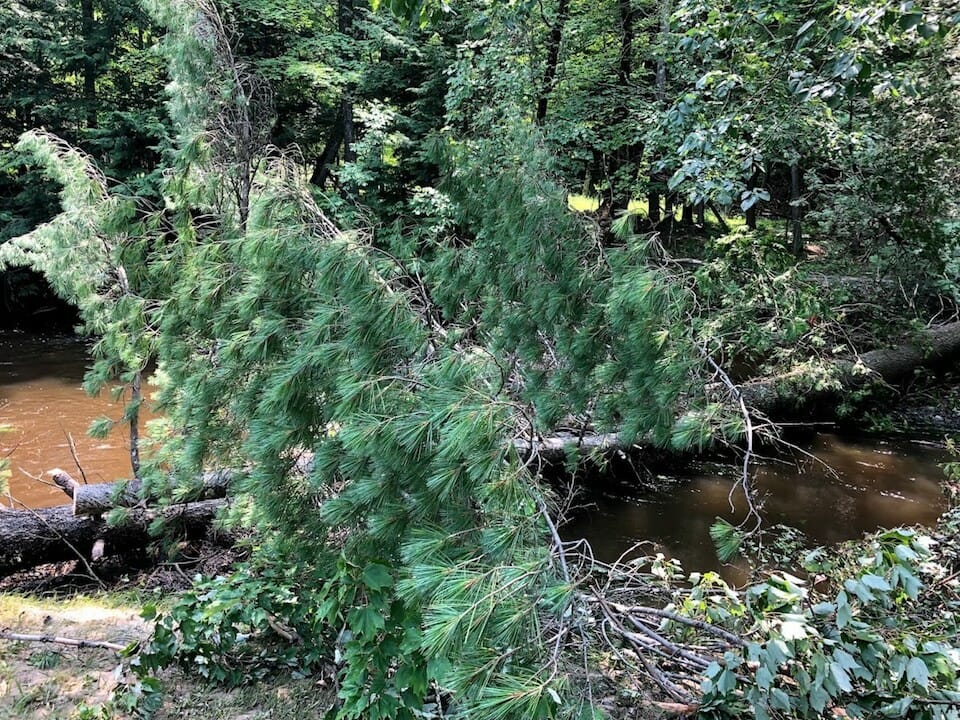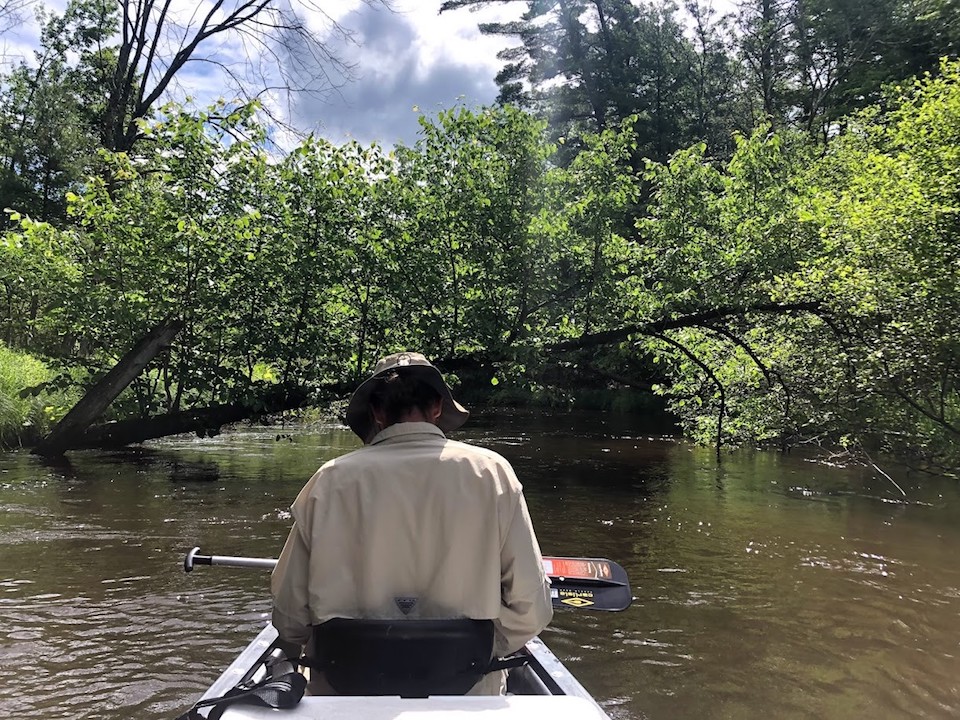By Matthias Bonzo
The management of mixed-use rivers is always a tough balancing act. Fishermen want to see whole trees and lots of wood in the river to provide habitat for their favorite quarry, while other users such as canoeists and kayakers would like to see less, ensuring a safe time for them and their families.
While the Wild and Scenic designation can go a long way for dictating how fallen trees are managed in the river, it can often lead to user groups simply coming down the river and cutting wood out, which allows the safe passage they are looking for but limits the habitat created while also leaving nothing but stumps to look at.

This is where Trout Unlimited, in partnership with Forest Service staff and local canoe liveries has come into play.
Trout Unlimited field staff will either make a preliminary run down the river and identify work sites, or get news of a downed tree from a guide or canoeist.
After a need has been identified TU and Forest Service staff will load a griphoist on a canoe and get to work. A griphoist is a large mechanical device that is anchored to a live, large tree on the riverbank, then has a cable fed through it and attached at the other end to the tree in the river. When operated, the cable tightens and begins to move the fallen tree. The griphoist has a pulling strength of several tons and can move quite large trees.
Using the griphoist, fallen trees can be repositioned to be parallel with the river, allowing for safe passage for kayakers and canoeist, while also maintaining maximum habitat and minimizing disturbance during the process.
Using a griphoist to reposition trees in streams may be a time-consuming process, but we believe that it is an excellent management tool for those in charge of maintaining rivers.
Matthias Bonzo attended Cornerstone University for his undergraduate education. A project coordinator for Trout Unlimited in the Great Lakes region, he resides in Grant, Mich., and loves all things trout.



